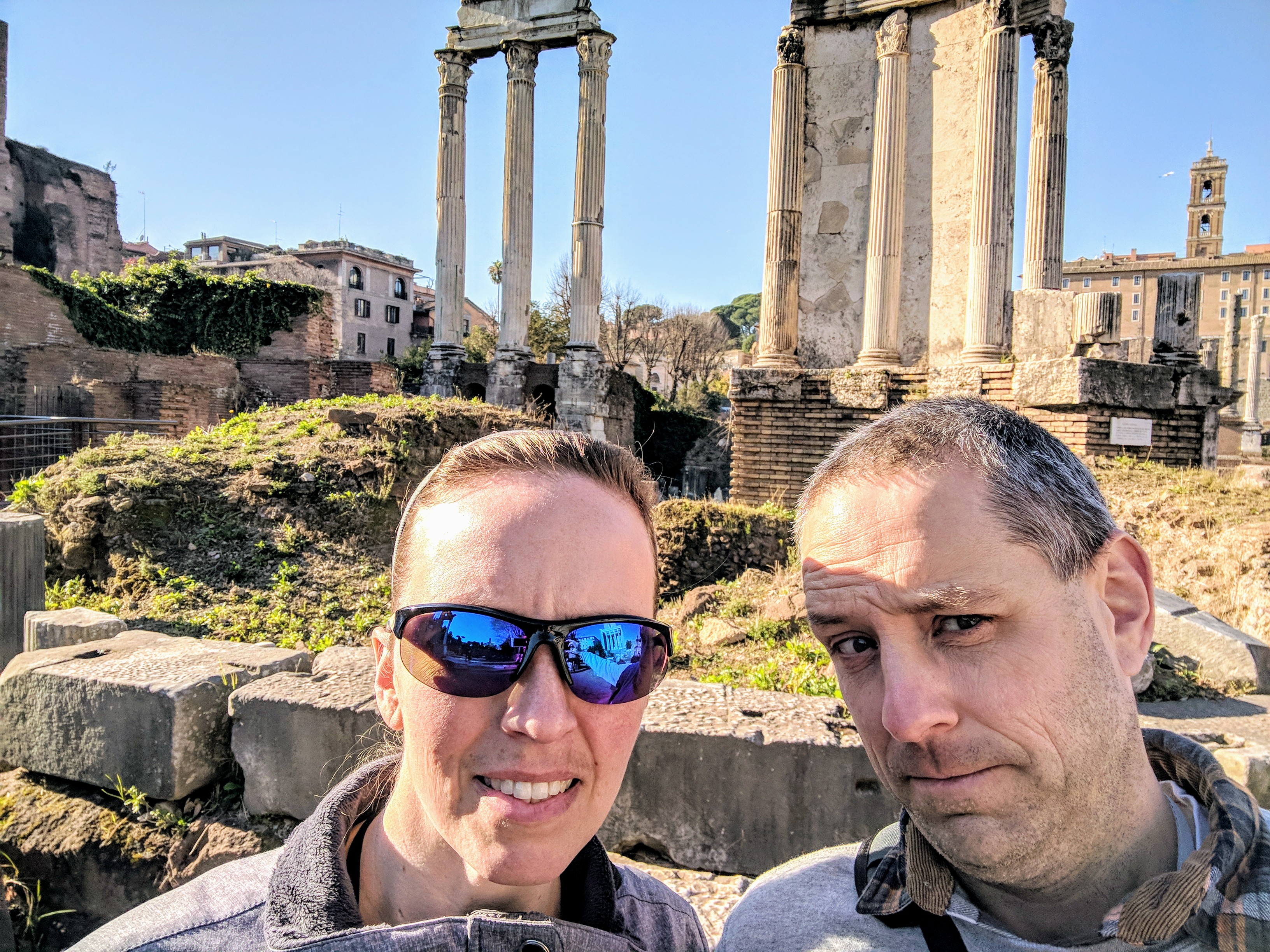Roman Forum
Wed Dec 06, 2017 1:28 pmWe continued our tour on the south side of the Roman Forum, where surrounded by 2000-year-old Virgins, we felt right at home.
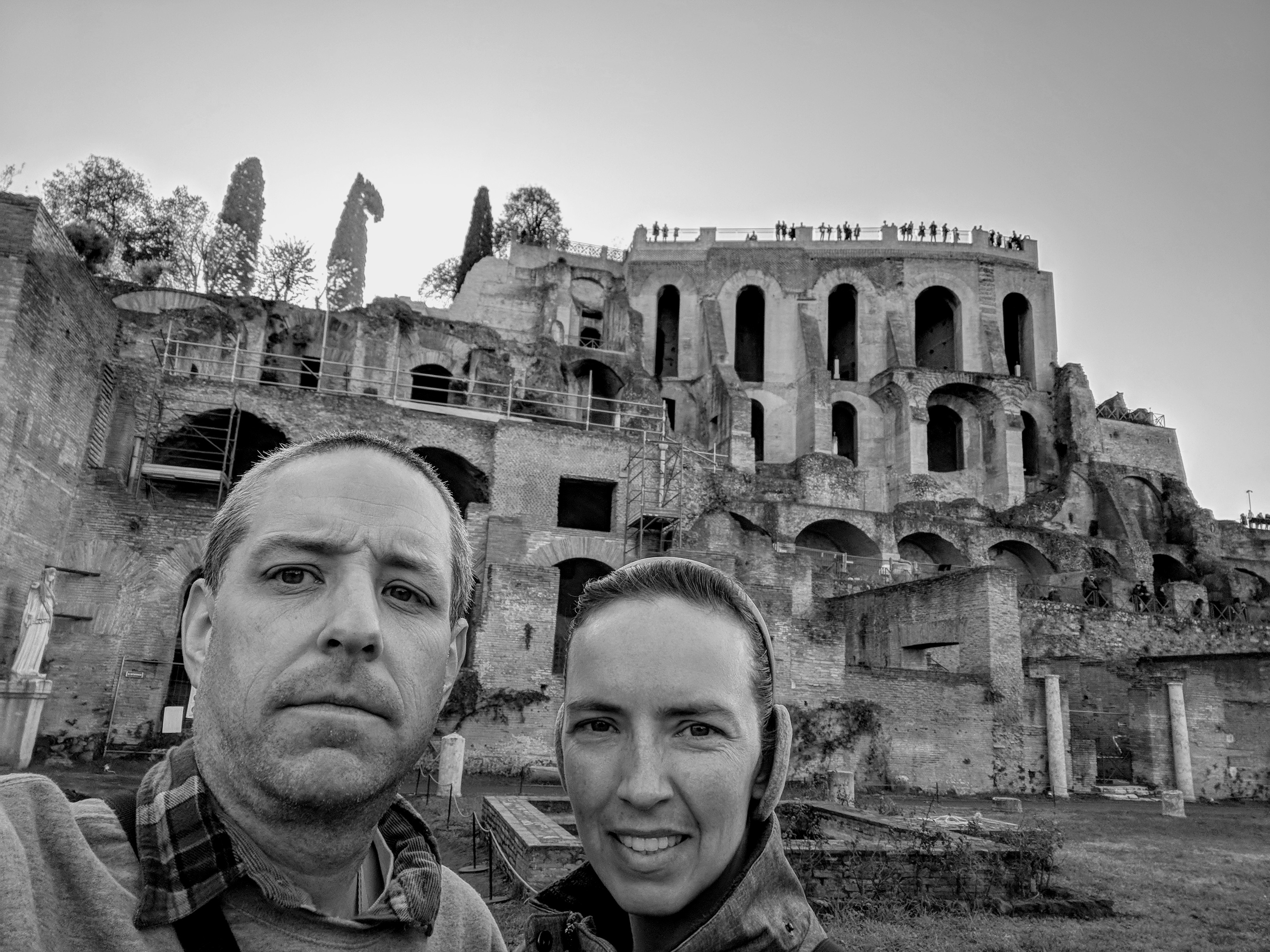
From this angle standing in the Atrium of the House of the Vestals is a fantastic view of Domus Tiberiana, where Emperors Tiberius, Caligula, Claudius, and Nero all lived.
House of the Vestals provided living accommodation for the Vestal Virgins, virgin Priestesses to Vesta, Goddess of Hearth and Home.

House of the Vestals included a long central courtyard with two pools at one end.
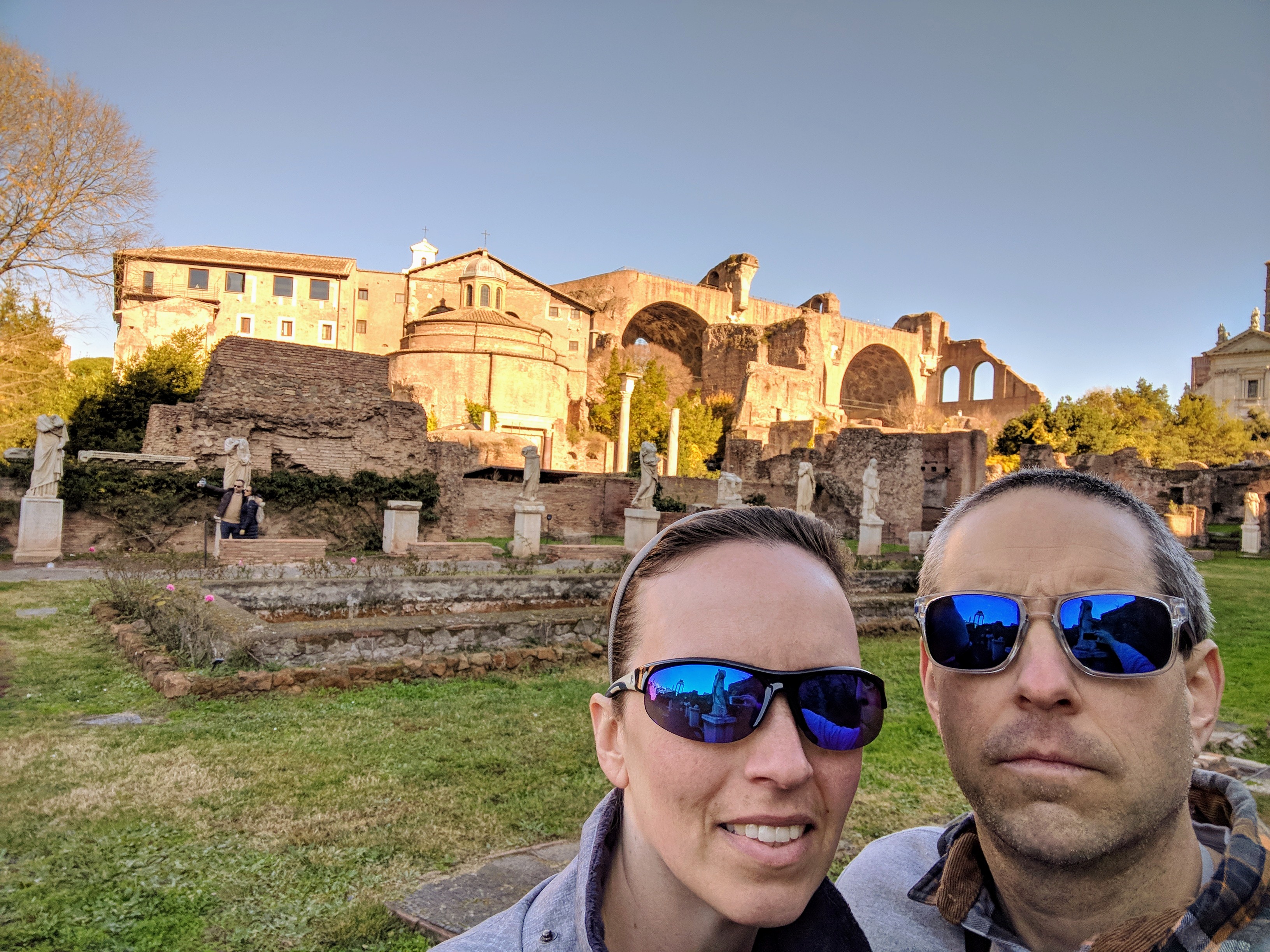
Once again from the Courtyard of the House of the Vestals, we captured a photo of our beautiful faces which also includes a view of Temple of Romulus, and a view of Basilica of Maxentius.
Emperor Constantine completed construction of the Basilica of Maxentius, after defeating Maxentius at the Battle of the Milvian Bridge, the outcome of which led Constantine to convert to Christianity. However the Basilica itself is completely secular. Why was there more than one Emperor? Because Emperor Diocletian had previously created a system of multiple Emperors known as the Tetrarchy.
Temple of Romulus is not in honor of Romulus mythical founder of Rome, but rather Valerio Romolo son of Maxentius.
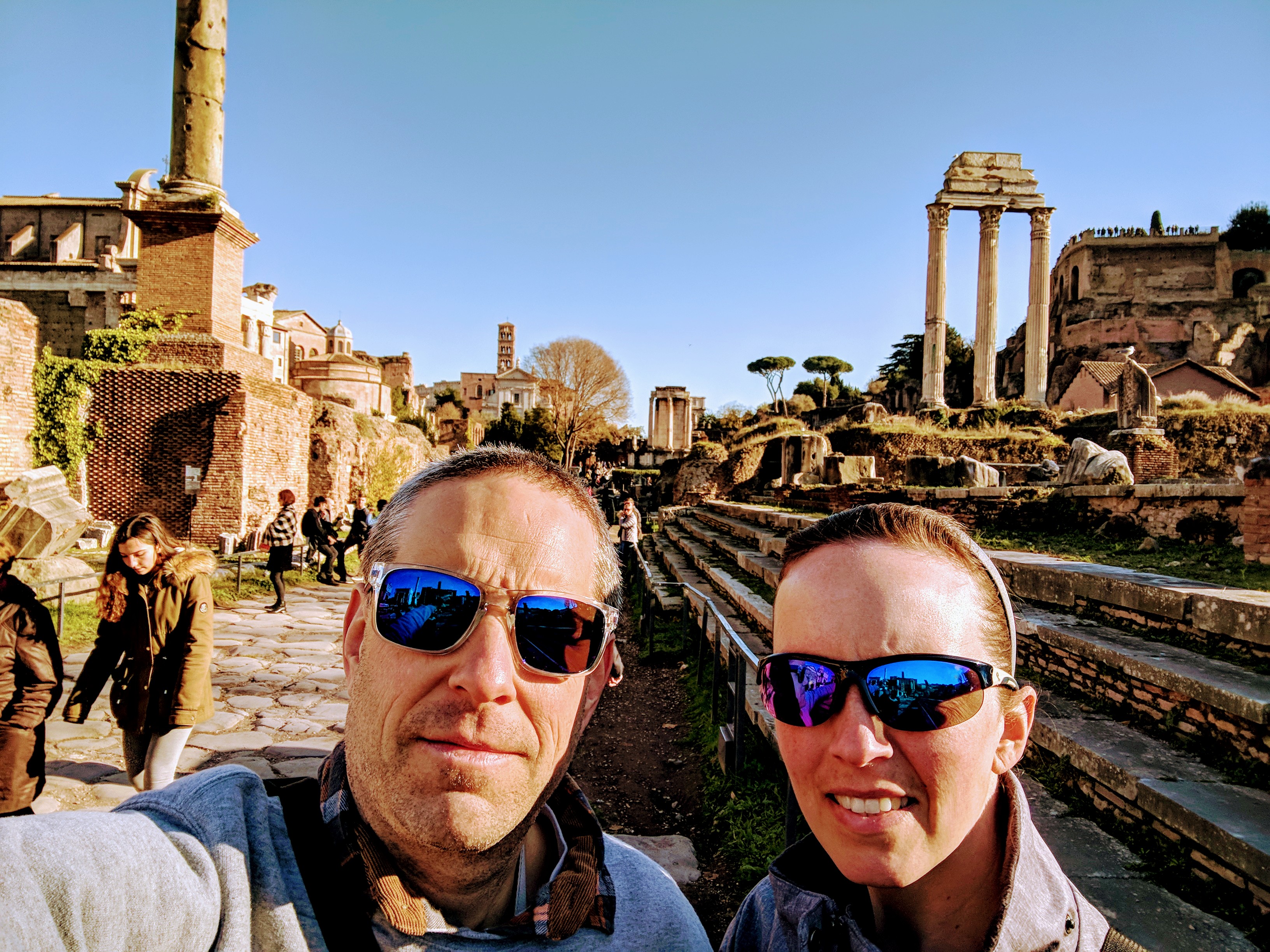
Immediately to our right stood Basilica Julia.
As for construction costs, Julius Caesar made himself very wealthy by conquering Gaul, a war in which he slaughtered a third of the population, but sold another third into slavery. And then he wrote a book about it! You should listen to me read De Bello Gallico & Commentary by Julius Caesar.
Above and to the right is Domus Tiberiana on Palatine Hill. Palatine Hill is the hill where Augustus built his Palace, and is according to some combination of Mythology and Archeology, the hill on which Rome was founded.
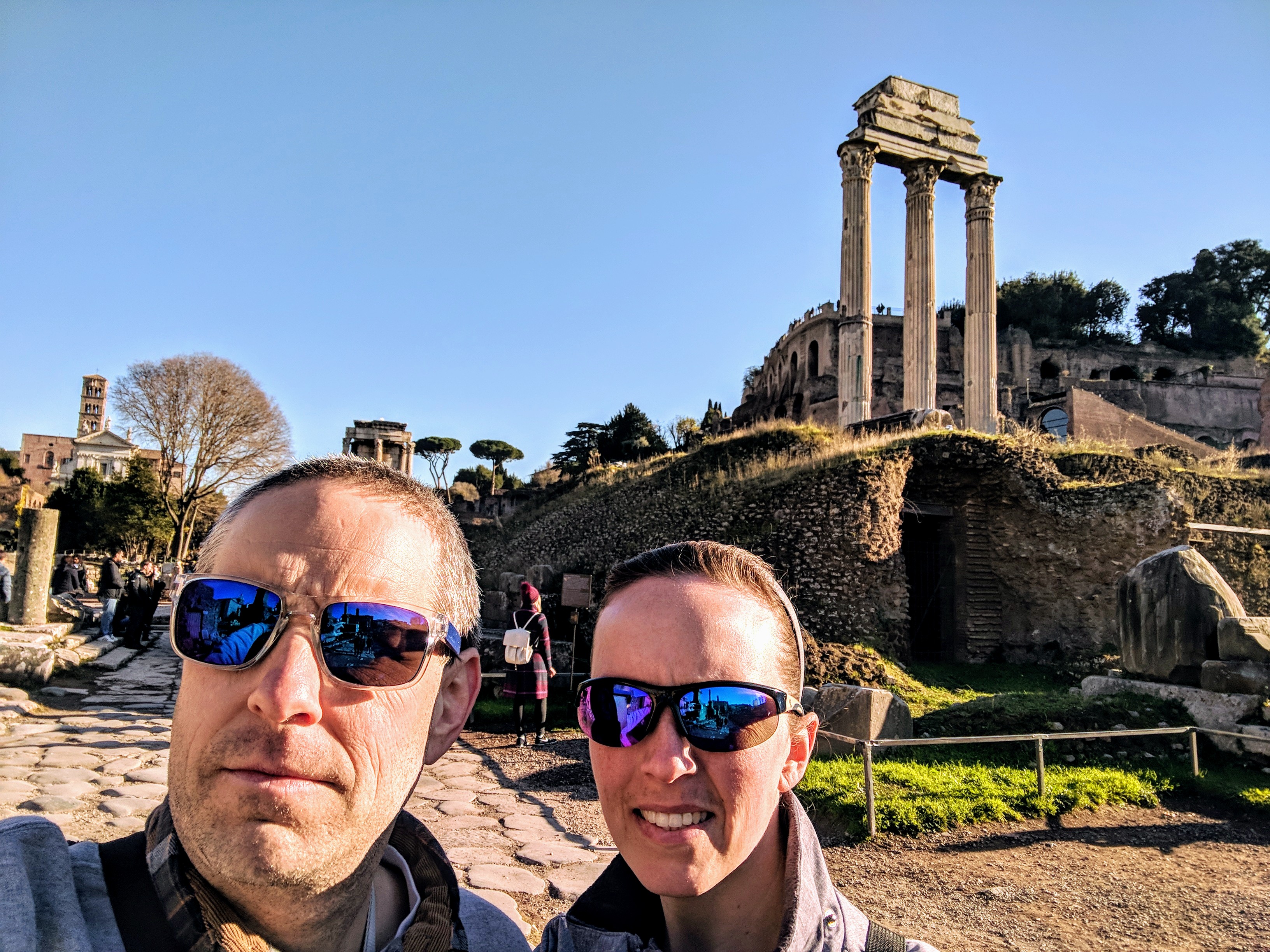
Temple of Castor and Pollox is in honor of the Battle of Lake Regillus in which the mythological brothers Castor and Pollox are said to have fought. For context, before Rome was a republic, it was a monarchy, and the Battle of Lake Regillus occurred during the reign of the last king of Rome Lucius Tarquinius Superbus.
